Looking for a safe, fun alternative to store-bought playdough? This easy gluten-free playdough recipe is perfect for kids with celiac disease, gluten sensitivity, or wheat allergies. It’s soft, squishy, and just as moldable as the traditional kind—without any of the worry.
Made with simple pantry staples you probably already own, this DIY playdough comes together in just a few minutes and can be customized with your child’s favorite colors or scents.
Whether you’re managing food allergies or just want a cleaner, more natural option for sensory play, this homemade playdough is a total win!
Plus, I’ll even show you how we use this playdough at home alongside my playdough mats to make learning fun.
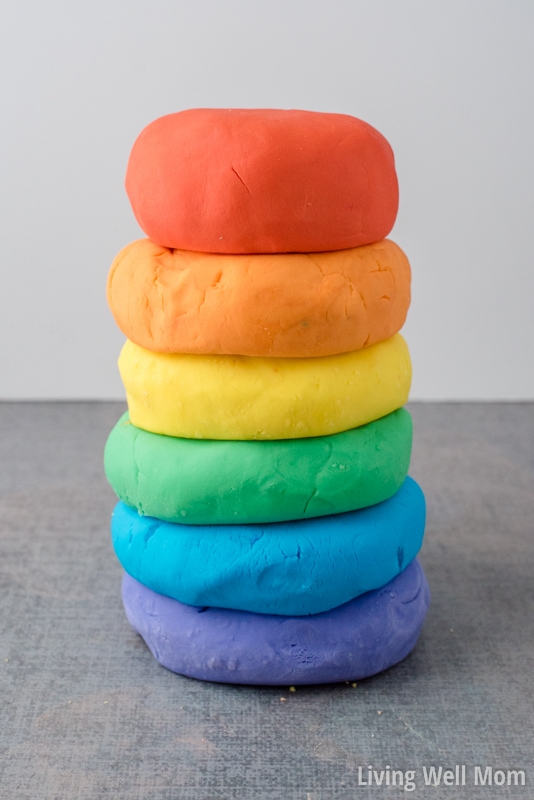
DIY Gluten-Free Playdough
One of my favorite kids’ activities is making homemade playdough. And clearly, you all agree because my Easy Homemade Playdough recipe is still the most popular post here at Living Well Mom!
I’ve been making that recipe for years of fun with my kids and using it in tandem with printable playdough mats. It never gets old!
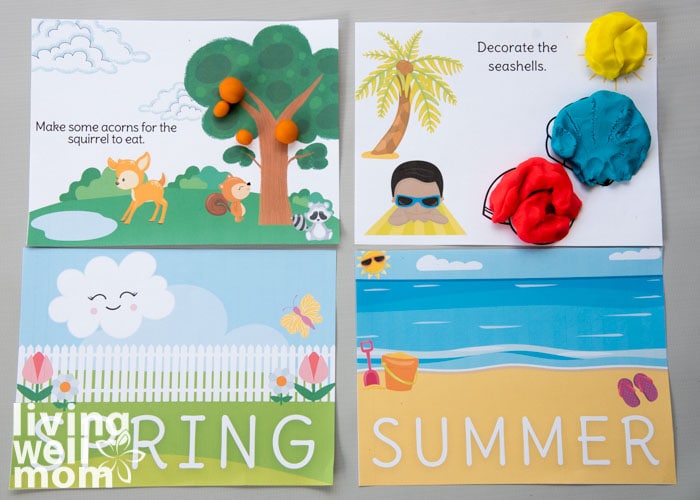

But since our whole family went on a gluten-free diet last summer, I decided to come up with a gluten-free playdough recipe.
Even though my kids don’t have celiac and I’m not too concerned about them handling a little playdough with regular ol’ flour, I just feel funny about keeping all-purpose flour in the house when we don’t use it for anything else.
A couple of months ago, I started experimenting with making a gluten-free playdough recipe. I tried some variations of my own classic recipe with salt and cream of tartar and then quite a few completely different versions.
I’m not a big fan of the two-ingredient corn starch and conditioner playdough recipe. Since it requires having an extra bottle of conditioner in the house and we use an all-natural conditioner, it’s more expensive and not something I’m willing to use on playdough. So that was out.
I finally settled on this simple 4-ingredient version of gluten-free playdough. While I stumbled on this combination myself, I googled it and discovered this was actually a pretty common recipe, so it’s not unique to me.
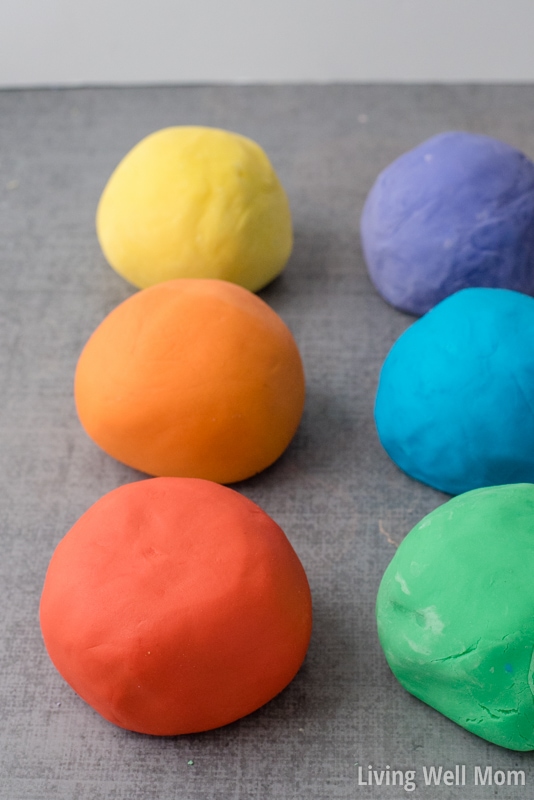
But anyways, this is our favorite gluten-free playdough recipe. I love that it’s so simple to make, it takes less than 5 minutes from start to finish (just like the original homemade playdough recipe) and the ingredients are common and inexpensive.
Ingredients
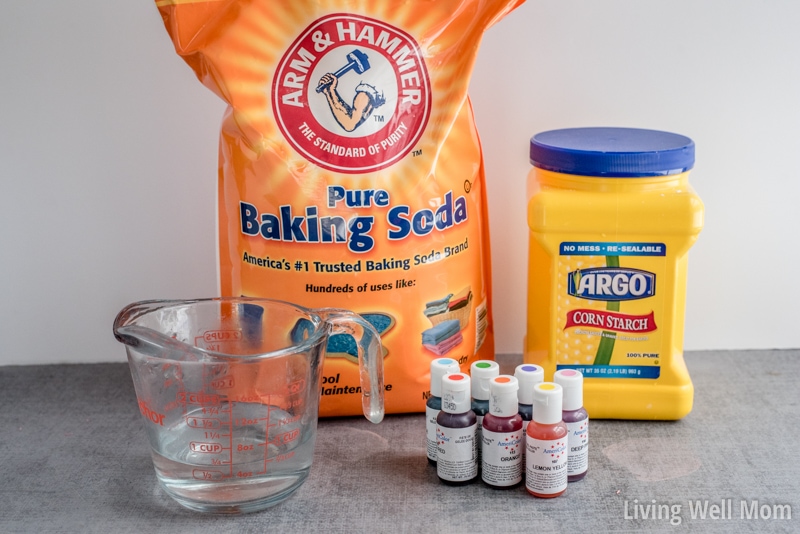
- 1 cup baking soda
- 1/2 cup corn starch
- 3/4 cup water
- foo
d coloring (see below!)
Tip: I highly recommend Chefmaster food color to get the vivid colors you see in these pictures. A few drops of color goes a long way and kids will adore making the colors of the rainbow or their favorite combinations!
Step-by-Step Directions
Making this GF playdough is so simple, and a great project to do with your little ones!
First, add the baking soda and cornstarch to a 2-quart saucepan and mix together with a spoon. Kids can help with this part!
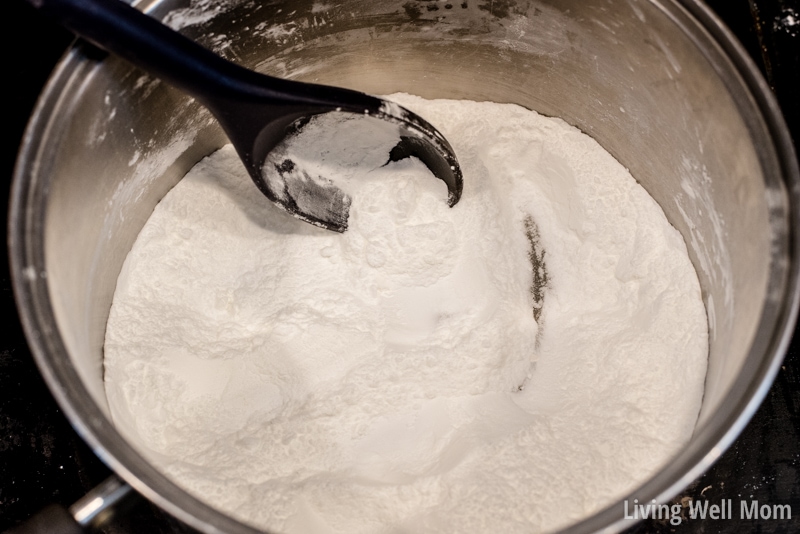
Then, turn the heat to medium, and add the water.
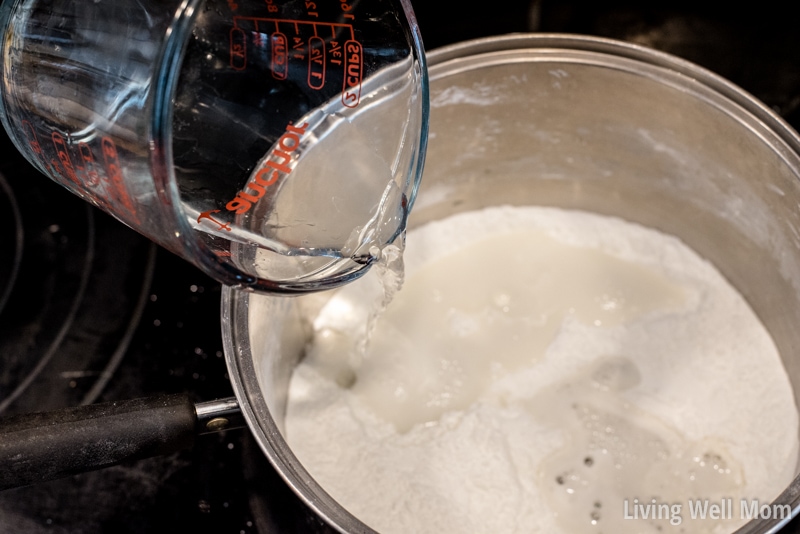
Now, add a few drops of food color.
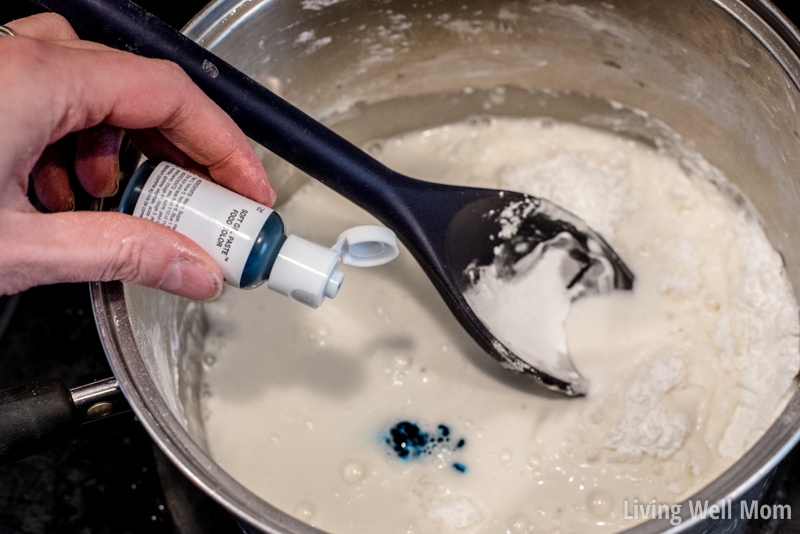
Stir well to break up any lumps. Don’t worry about it too much though; you’ll get it all mixed together eventually.
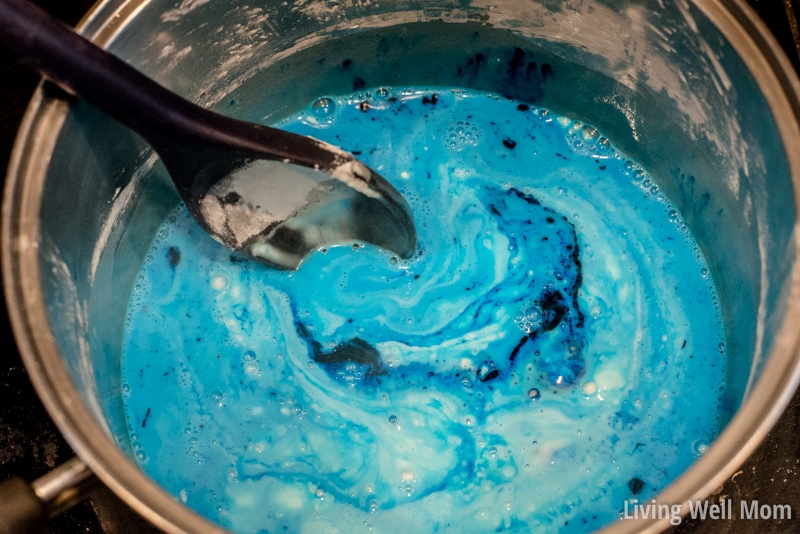
Cook and stir constantly until the playdough starts to become a little more solid. This should take less than 5 minutes.
Usually, subsequent batches come together much quicker because the pan and burner are already warm so just keep an eye on things.
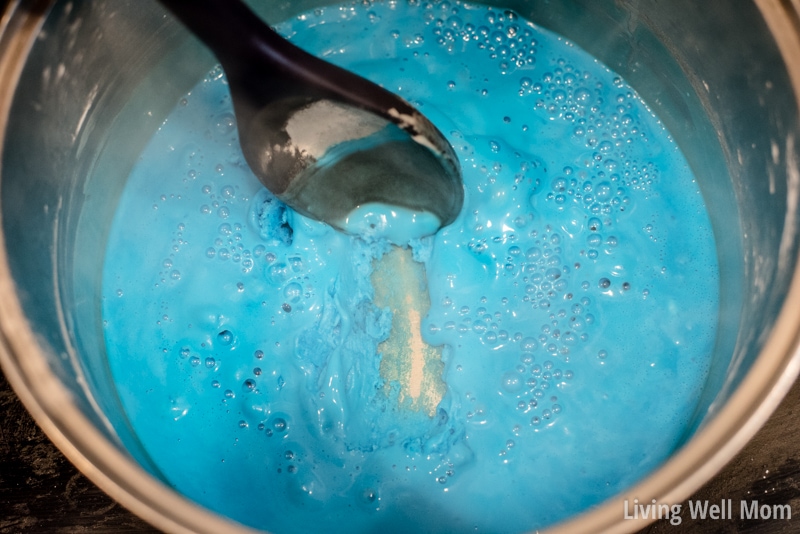
It should come together quickly after that. Continue stirring.
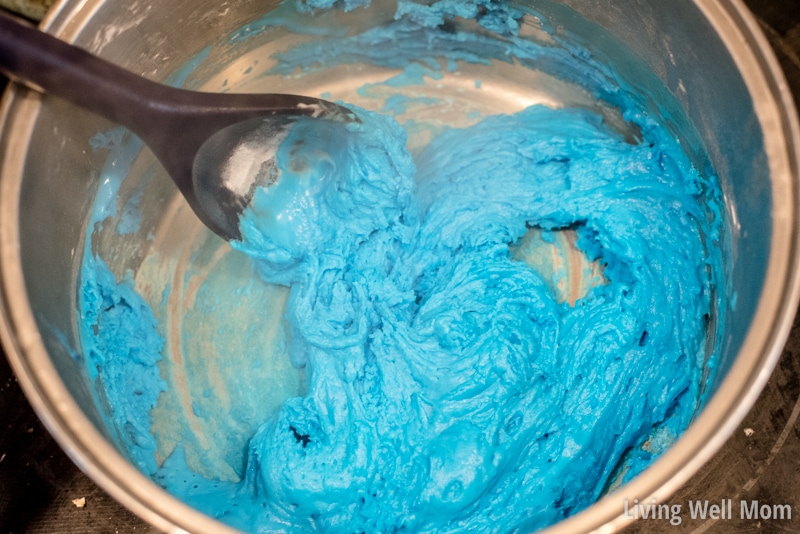
Once the playdough starts to ball around the spoon, remove the saucepan from the heat and stir until it’s all pretty much clumped together.

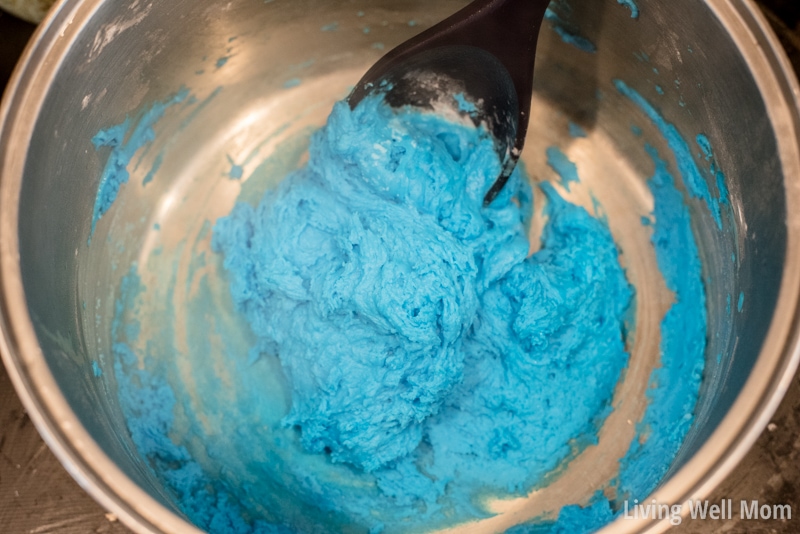
Then remove the gluten-free playdough onto a solid surface. It will still look a little lumpy and unfinished; that’s okay.
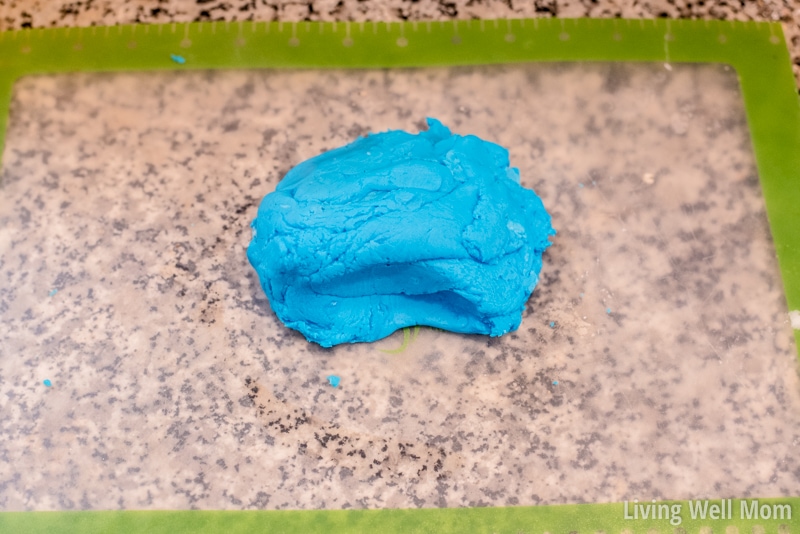
Let it cool for a minute, then knead it together. You’ll see the imperfections quickly smooth out.
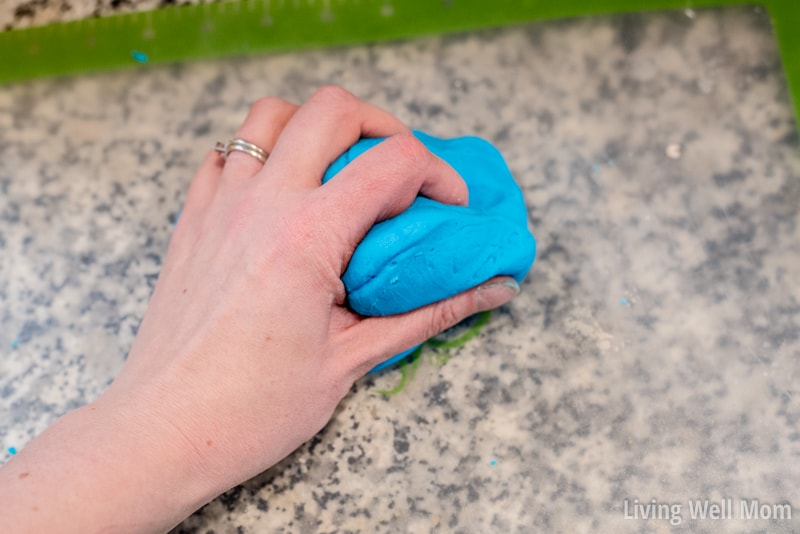
Now, you’ll suddenly have a beautiful ball of playdough!
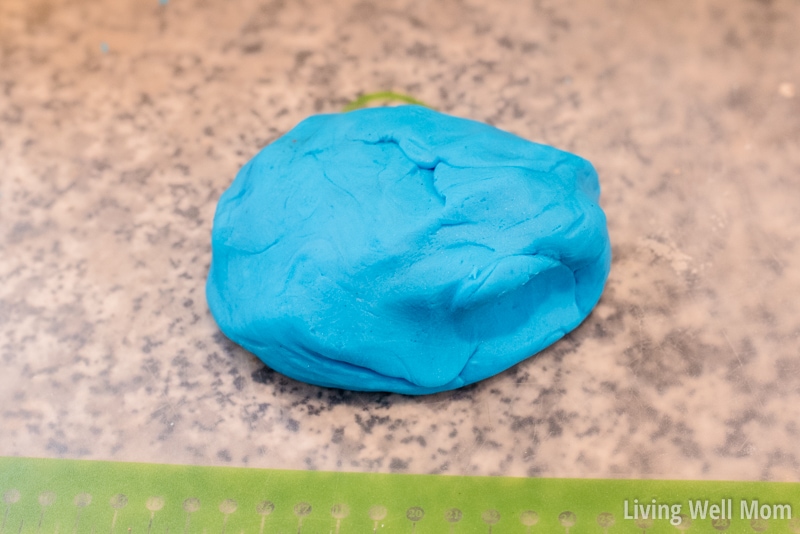
See how easy that is? That’s all you have to do to make your very own homemade gluten-free playdough!
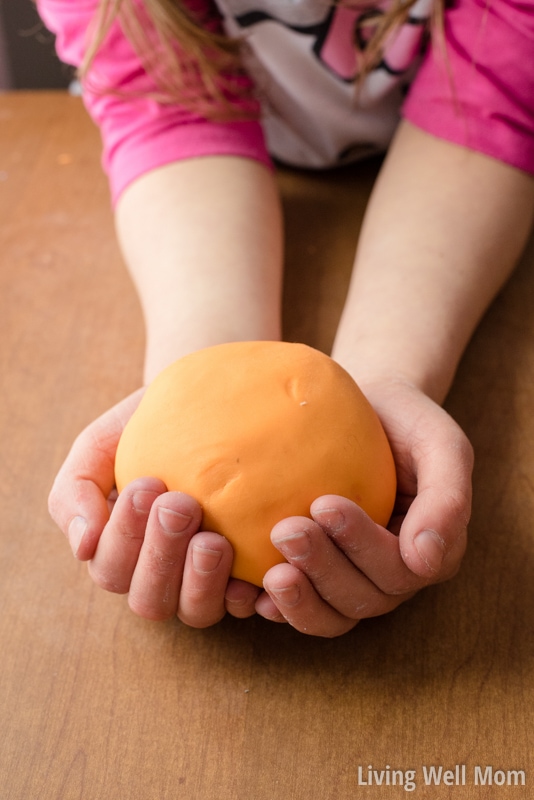
What to Do with Playdough
Making the playdough is the easy part. What’s more challenging is trying to figure out how the kids can play with it for longer than five minutes! Because let’s face it – most of us don’t schedule out a playdough day with our kids.
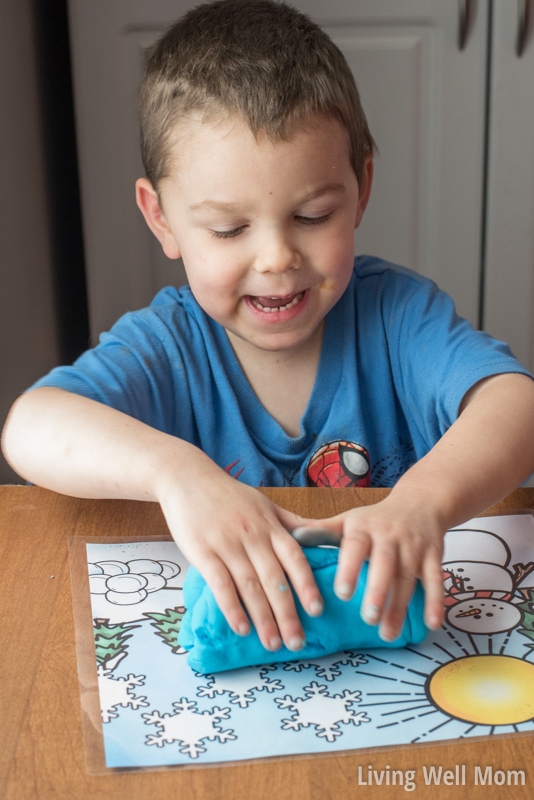
Don’t worry, though. I have you covered. My favorite way for kids to use playdough? Playdough mats!
With these mats, you can combine play and learning. Keep those little minds and hands busy by following the activities on these printable playdough mats.
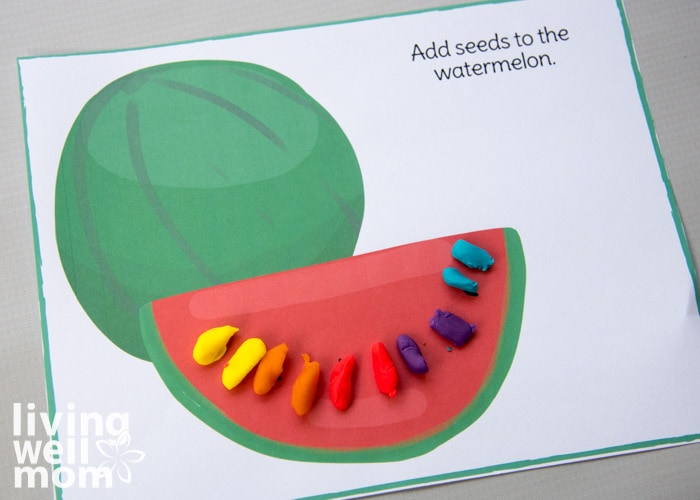
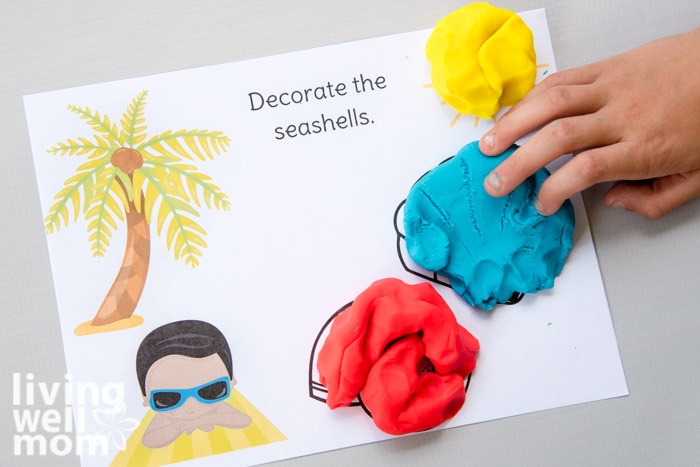
Want to give it a try? I’ve created a bundle with 150+ different playdough mats that your kids (and you!) will love. There are so many opportunities here for your kids to be entertained!
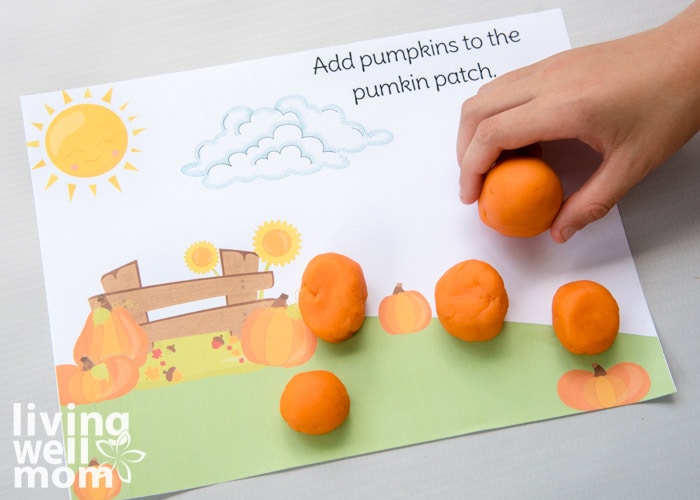
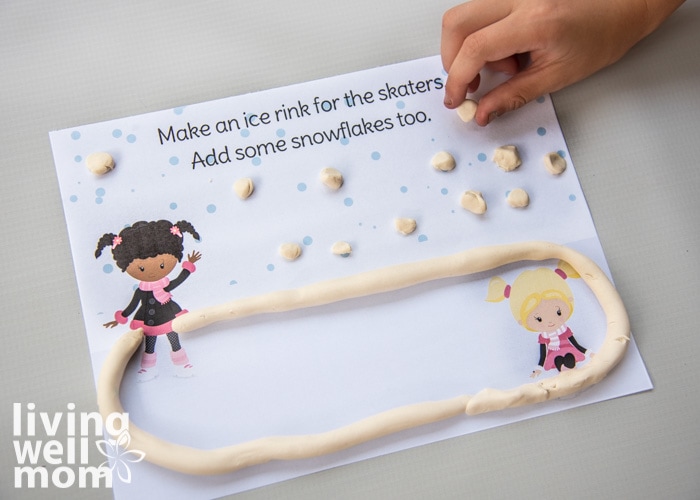
You can simply print them off and give them to your children, or if you want to reuse them over and over you can print and laminate them (my preferred method).
FAQs About This Playdough
Does this feel the same as the store-bought playdough?
This gluten-free playdough has a softer, different consistency than regular playdough. My kids said they actually prefer this kind because “it’s more fun.” (I’m not sure how that’s possible, but as long as they’re happy with it, I’m good with it too!).
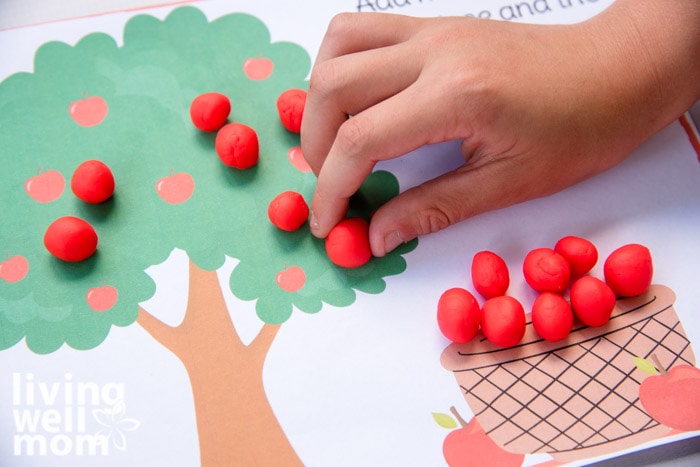
Just like the store brand, this gluten-free playdough is fun to pinch, pull, roll, mash…all the good stuff. See why those playdough mats come in handy? 😉
How much playdough does this recipe make?
One batch makes one ball of color that you see in the photos. It’s probably equivalent to 2 containers of store-bought playdough.
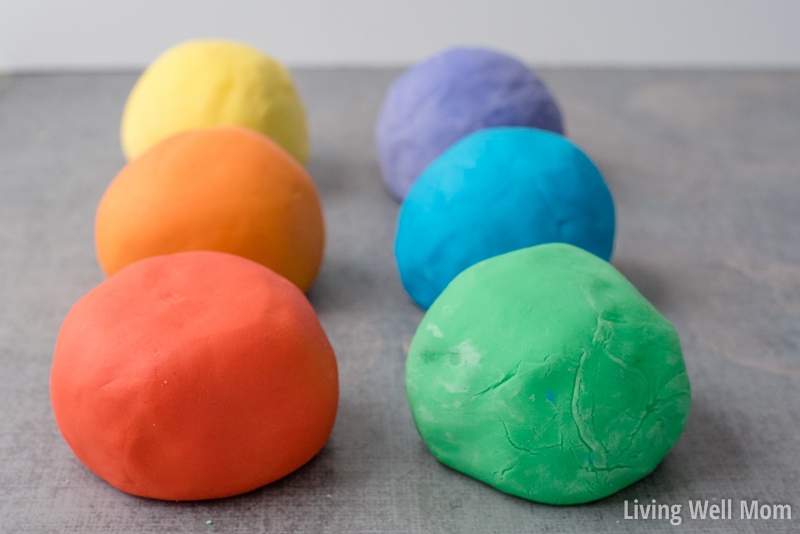
Help! My playdough turned all hard and crumbly.
Don’t panic! Gluten-free playdough dries out faster than the regular version. If your kids leave it on the table and run off, it will probably end up crumbling and they’ll be worried their playdough is ruined. You can revive dried-out, crumbled playdough by heating it back up over med-low heat and stirring in a tablespoon or so of water. We’ve saved quite a few batches by doing this.
I’ve also noticed that the playdough seems to harden in colder temperatures. When I took some of these photos near a chilly window, the playdough really solidified. Again, we revived it with water and a little heat.
It must have something to do with the combination of cornstarch and baking soda. Any chemists out there have an idea?
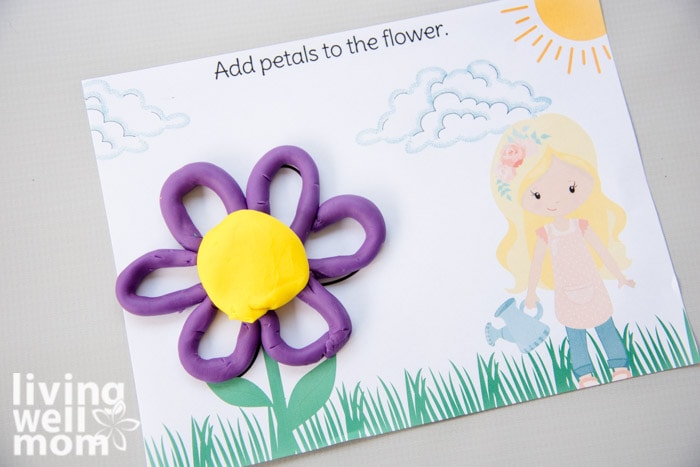
How should I store homemade playdough?
Store in a tightly sealed plastic bag in the refrigerator.
I do NOT recommend keeping this dough at room temp! Our original batch turned moldy after two weeks in the pantry.
How does this dough compare to regular homemade playdough?
All-in-all, I still prefer the regular version of playdough as it’s less prone to drying out and hardening, but if your kids are sensitive to gluten or you simply don’t have the cream of tartar or some other ingredient the original recipe calls for, this is a fantastic gluten-free playdough recipe, especially when paired with these seasonal playdough mats.
More Kids’ Activities
- 2-Ingredient Edible Finger Paint
- Spring Garden Matching Game
- How to Make Painted Pet Rocks
- Make Homemade Bubbles (easy + Strong!)
Just pin it below to find the instructions later!
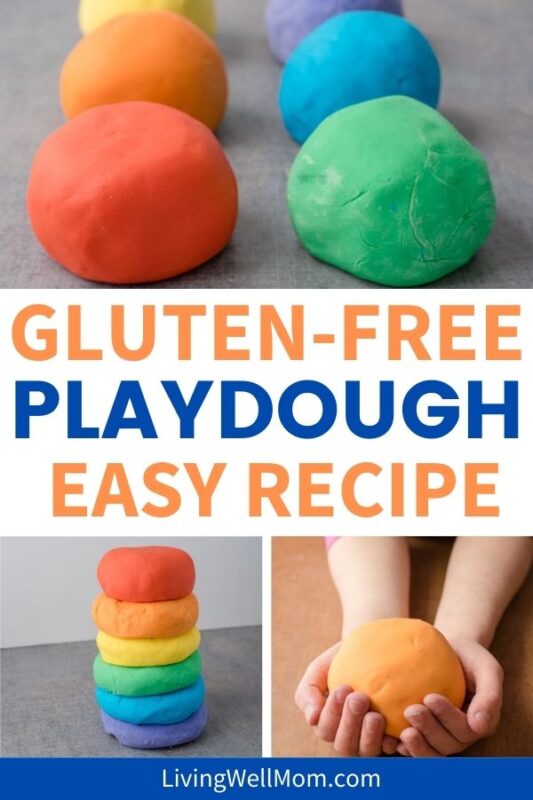

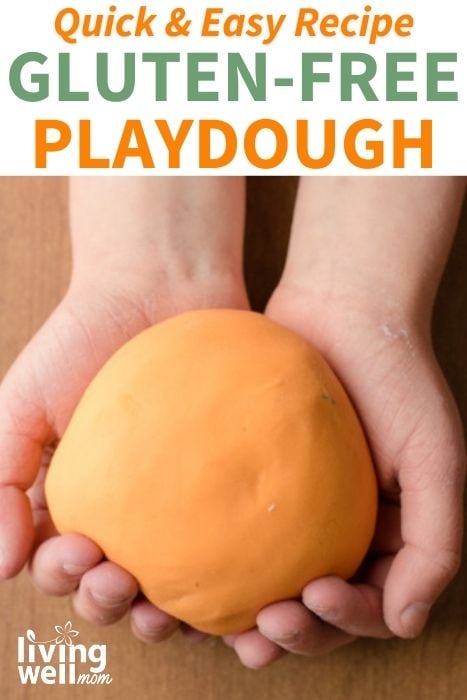
Scott says
I’m one of those people also who don’t like the consistency of regular Play-doh. Something about the way it tears bothers me.
valmg @ Mom Knows It All says
My kids both used to enjoy playing with Playdoh. You did a great job on the colors!
Ellen Christian says
I love the vibrant colors you got. The kids look like they’re having a great time.
Jennifer says
That is so great! It makes so much more sense to make your own playdough instead of buying it. That stuff is expensive!
Erika says
It is expensive, especially when kids often leave it sitting out to dry and crumble!
emma says
Hi Erika,
Great recipe!
This is probably a silly question bur is it safe to eat if it gets in children’s mouths?
Thanks
Emma
Erika says
Hi Emma, not a silly question at all! 🙂 It’s very salty as you can tell from the ingredients so I doubt a child would want to continue eating after they have a taste. However, that being said, the ingredients are non-toxic so it shouldn’t pose a problem. Unless perhaps they try to eat all of it and the high quantity of salt could cause an imbalance?
Marisa says
Is this recipe supposed to have salt in it? Your reply to another poster mentions “very salty” and “high quantity of salt” and I just want to make sure I’m not missing something in the ingredient list. I plan to make this very soon for my celiac-kiddo!
Erika says
No, it’s not. Thanks for pointing that out. I have another non-gluten-free playdough recipe that uses a lot of salt and I was thinking of that one in my response to the other comment. Good checking!
Tatiana says
Baking Soda is naturally very salty
Jacki says
To be clear, baking soda is high in sodium but not technically in salt (which is sodium chloride). Baking soda is sodium bicarbonate.
It’s also actually a very weak base. (Opposite of an acid, if that helps.)
Greta Brinkley says
I love the colors that your have – they are really fresh and bright. Is there any issue with the food coloring staining?
Erika says
No, we didn’t have any staining. Of course it depends on how much coloring is added. 🙂
Janis says
My son has celiac he’s a grown man though but this gluten free recipe would great for kids with celiac disease
A loving grandma
BLAH says
THIS SO GREAT MY DAUGHTER LOVES MAKING IT 4 HER FRIENDS
Lindsey says
Our is very sticky. Is that normal? What do I need to do differently? We love it tho they all the stickyness
Erika says
It shouldn’t be very sticky. Usually stickiness means it hasn’t been cooked long enough. You could try heating it up again, though I’m not sure how well it would work after the fact.
Good luck!
Kimi says
mine too!!! soooooo sticky, kids wouldn’t even play with it. I added some corn flour, which helped, but I still think the corn flour recipe works better, at least for me 🙂 Thanks for the recipe tho! Still trying to tweak it…..
*I cooked it for quite awhile
Erika says
Hmm that’s a bummer it didn’t work for you, Kimi. What kind of flour blend did you use originally? Sometimes the brand makes a difference.
Jamey says
I just made it and it turned out perfect! My 3 year old son has celiac and I haven’t let him play with playdogugh much because somehow it always ends up in his mouth! Thanks for the recipe and tips!
Ali says
I love this recipe! Every few years I have preschool students with severe food allergies and I’ve tried quite a few GF play dough recipes. This is my favorite because it is fast, simple and has minimal food ingredients, making it great for children with multiple food allergies. We’ve had success adding glitter and extracts to make it scented.
Jacky Esteron says
Hi,
I tried out the recipe and i loved it. Even when i cut them down in to smaller batches, the consistency remains the same. I like the texture, softer than store bought. I just have a question…how did you end up with a nice purple color? Mine turned dark very dark that is. And how long did it last inside a tightly closed container in the fridge. Thanks a lot. Take care always.
Erika says
Hi Jacky, some purples turn out oddly. I would suggest trying a different shade of food coloring (and the gel works best.)
You do not have to store in the fridge. Store in a sealed container or ziploc bag and it should last for months. Just make sure it’s 100% cooled before sealing.
Aileen says
Thank you for your recipe! I just made it for my child’s K classroom.
Was just wondering if you have ever put a bit of baby oil to make it stick less and dry out longer?
Erika says
I have not tried baby oil before but that’s a good idea for this gluten-free playdough.
Lindsay says
Do you have any idea if this would hold together if baked lightly? I need a craft project for an upcoming birthday party. It would be nice if the kids could bring home their creations.
Erika says
Hi Lindsay, this probably wouldn’t work well for baked crafts. I have a salt dough recipe that would work better – https://livingwellmom.com/glitter-salt-dough-snowflakes/
Corrie says
How long was this good for in the fridge?
Erika says
About 2-3 weeks.
Sarah says
Just made 3 perfect batches for my celiac girl! We love it! Added in a few drops of lavender pure essential oil and it smells like heaven!
Thank you for sharing!
Erika says
I’m so glad you both loved it! Thanks for telling me, Sarah! 🙂
Sue says
I made this play dough in wonderful colors in order to work with children who are Gluten Free. I followed the recipe very carefully as I am a good cook. It seemed to be amazing. However when we played with it it stuck to EVERYTHING – even fingers. It crumbled onto the carpet in the agency room we used. I had to vacuum, then scrape the rug, then vacuum again. The children’s hands were stained- I used icing quality food coloring. After this fiasco I promptly threw it all away. Unfortunate that I spent so much time with this.
Erika says
How frustrating. I’m sorry it didn’t work out, Sue. If it’s sticky, that usually means it needs to be cooked a little longer. The gluten-free version is more finicky than my regular recipe. Sorry you had a bad experience.
Nicole says
I work at a before and after school program. I love this recipe and it always turns out great! Its perfect too because my coworker is allergic to gluten. However i am always making it at home and would love to make it in the classroom with my kids. Do you think this recipe would work if i use boiled water?
Erika says
Hi Nicole, I don’t think it would. I would be afraid it still wouldn’t give the flour enough time to thicken up properly and you’d end up with a sticky blobby mess. Sorry! If I do hear of an in-classroom way to make it, I’ll reply and let you know.
Lindsey says
Do you think your regular recipe would work with gluten free flour??
Erika says
Not quite. I’ve tried it. I ended up having to tweak it and shared my gluten-free playdough recipe here:https://livingwellmom.com/easy-gluten-free-playdough/
It’s not quite as durable, long-lasting, or nice as the main playdough recipe here so if you CAN use regular flour and you/your kiddos aren’t allergic to gluten, I would recommend that. But the gluten-free recipe does work and is a nice recipe when no-gluten is a requirement.
Darci says
Shoot! I wanted this to work so bad! It looked beautiful but stuck sooo bad.i watched the cook time carefully after reading comments too.. Going to try it again as the texture was amazing
Darci says
So we tried this and at first it was waaaaaya too sticky. I added about 1/2 TBSP vegetable oil to it and it came together perfectly!! This dough has amazing texture. My kids enjoyed it so much. A few drops of essential oil and we were good to go!